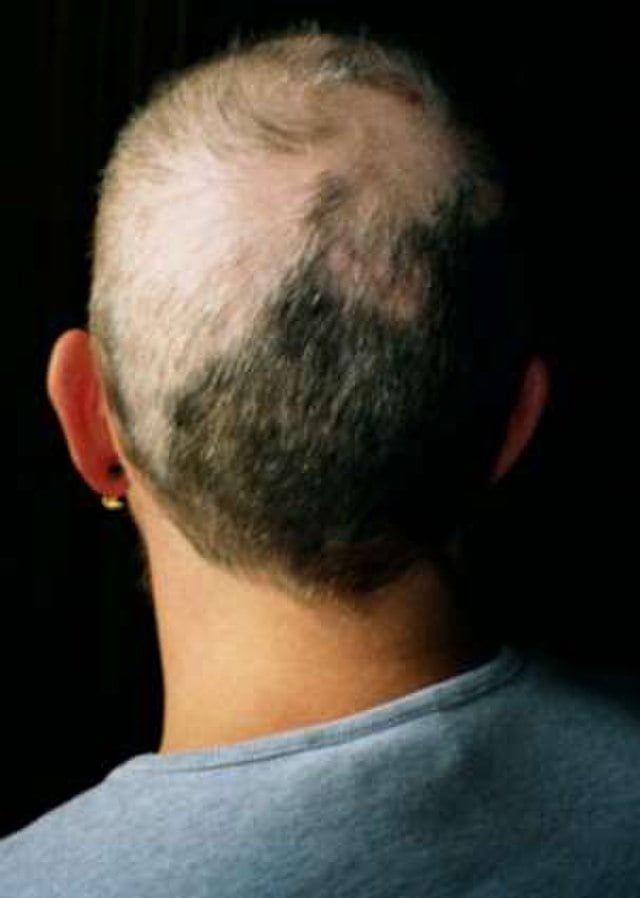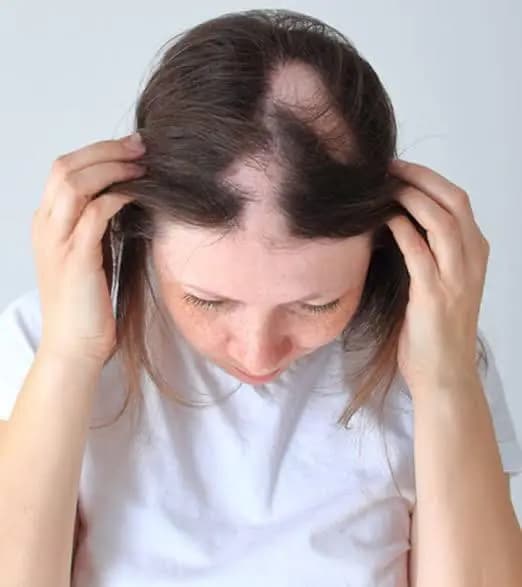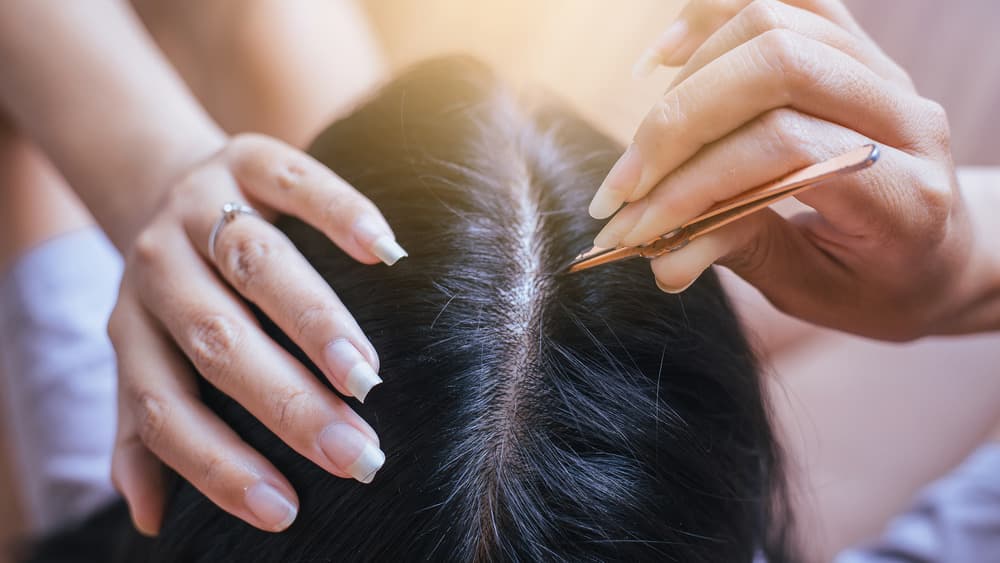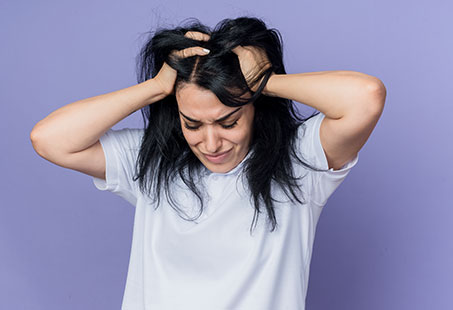Trichotillomania is a hair-pulling disorder in which a person has an intense, irresistible urge to pull their hair out.
It’s a mental health disorder which can seriously impact an individual’s quality of life. The problem is that many people with this condition deny they even have a problem in the first place.
But it’s very important to get treatment because it can cause severe emotional distress and long-term physical health complications. The hair loss resulting from this condition can also be permanent.
In order to get help as soon as possible, you need to know what trichotillomania is, as well as its symptoms, causes, treatments, and prevention.
What Is Trichotillomania?
Trichotillomania has been recognised as a mental disorder by the Diagnostic and Statistical Manual of Mental Disorders (DSM).
Previously, it was categorised as an impulse control disorder. However, in the latest DSM-5, it’s in the obsessive-compulsive and related disorders category.
The compulsion to pull out one’s hair can be mild or severe and can be caused by various factors (rage, boredom, stress). Although, those with higher stress levels are at a greater risk of developing this condition.

The “pulling sites” are not just limited to the scalp. It can include facial hair (beard, moustache, eyelashes and eyebrows) and body hair (hands, legs, arms, chest, armpit, pubic area).
It’s common for people to have multiple active pulling sites. However, these can change with time. Plucking is usually done with fingers, but some people also use tweezers.
Those with trichotillomania usually engage in this behaviour privately. And there can be episodes of it, lasting from a few seconds to hours. And they’re more likely to do it while they’re driving, watching TV, reading, or writing.
It should also be noted that around 10-20% of trichotillomania sufferers also have “trichophagia.” It’s when a person eats plucked-out hair. This can lead to trichobezoar, in which a hairball is trapped in the stomach.
Additionally, trichotillomania can cause infections, blepharitis (eyelid inflammation), carpal tunnel, and pain.
It can also cause mental health issues, such as shame, anxiety, depression, poor self-esteem and drug abuse. However, keep in mind that people with trichotillomania may also have other mental disorders like:
- Generalised anxiety disorder (GAD)
- Obsessive-compulsive disorder (OCD)
- Post-traumatic stress disorder (PTSD)
- Substance use disorder (SUD)
- Sensory processing disorder (SPD)
- Eating disorders
What Are The Different Types Of Trichotillomania?
There are two main subtypes of trichotillomania which are as follows:
- Focused Pulling – In focused pulling, the person is aware of their actions and actually intends to pluck their hair out.
- Automatic Pulling – As the name suggests, in automatic pulling, the person isn’t even aware of what they’re doing while they’re doing it.
Usually, people have a mix of both. However, how you pull may indicate other things about your health as well.
Research published in Behaviour Research and Therapy found that “high-focused” hair pullers have more symptoms of anxiety and depression than “low-focused” pullers.
Additionally, “high-automatic” pullers tended to have more symptoms of depression than “low-automatic” pullers.
When Was Trichotillomania First Discovered?
Aristotle’s “Nicomachean Ethics” (4th century BC) contains the first documented history of trichotillomania, according to a publication in the International Journal of Trichology.

French Dermatologist Francois Henri Hallopeau coined the term “trichotillomania” in 1889 after seeing a male patient who had pulled his hair out. It’s a combination of three Greek words: thrix (hair), tillein (pulling), and mania (madness).
How Do You Know If You Have Trichotillomania?
Symptoms of trichotillomania can include:
- Irregularly-shaped bald patches on the scalp, face, and/or body.
- Friar Tuck sign with hair loss in the crown.
- Feeling tense before plucking the hair and relieved after.
- Inspecting, playing, rubbing or eating the plucked hair.
- Problems in personal and professional life due to hair-pulling habit.
Diagnosis from a medical professional is important. That’s because those with trichotillomania often deny they have this problem.
DSM’s criteria for the diagnosis of this condition include:
- The patient recurrently pulls their hair and has alopecia because of it.
- The patient has attempted to reduce hair pulling or stop it.
- Hair pulling habit has caused distress or impairment in social, occupational, or other important areas of the patient’s life.
- There’s no other medical explanation for the patient’s hair pulling and hair loss.
- Another mental disorder cannot better explain hair pulling.
Is Trichotillomania A Disability?
Trichotillomania, when it severely impacts the normal functioning of life, can be considered a disability.
Those with trichotillomania usually feel ashamed and embarrassed. It may result in them avoiding social situations, which can be dangerous if necessary medical care is delayed.
In the same vein, their professional lives can be negatively impacted since they might feel like hiding themselves. That, in turn, can make one feel alone, isolated, sad, and frustrated.
It should also be noted that trichotillomania typically emerges between the ages of 10 and 13. And it can disrupt the academic life of individuals as well from early on.
How Many People Have Trichotillomania?
Different researches show that trichotillomania has a prevalence rate of 0.5%-2%. It tends to be more common in women. And women are four times more likely to have this hair-pulling disorder.
According to the NHS, it also tends to be more common in teenagers and young adults.
What Causes Trichotillomania?
The exact cause of trichotillomania isn’t clear. However, different factors are believed to be involved.
For one, it tends to have a familial component. Certain genetic variations have been associated with its development.
Changes in the structure or chemistry of the brain are also thought to be responsible.
For instance, one study published in the British Journal of Psychiatry found grey matter abnormalities in those individuals who had trichotillomania. And this brain tissue plays an important role in memory, movement and emotions.

Trichotillomania is also caused by certain negative emotions, such as anger, stress, fatigue, and boredom. And the relief provided by the pulling of the hair can further reinforce this behaviour.
It’s also speculated that hormonal changes during puberty (which is the average onset age of trichotillomania) may play a role in this disorder.
Can Hair Grow Back After Trichotillomania?
Hair can grow back after trichotillomania if the follicle hasn’t been damaged. If the condition is managed early on, the hair should start to grow back.
However, this condition is chronic. And if the hair has been pulled for a long time, it can even lead to scarring, which can result in permanent hair loss.
How To Stop Trichotillomania?
There is no cure for trichotillomania. There are, however, different treatments that may be helpful.
The primary course of treatment usually includes habit reversal therapy (HRT), which is a form of cognitive behavioural therapy (CBT).
As the name suggests, this therapy helps in the reversal or unlearning of certain behaviours like hair pulling. In this therapy, the patient is taught to identify the problematic behaviours and then help change them. The goal is to replace those harmful behaviours with healthier ones.
Other than that, group therapy can also be helpful because it can provide a support network. Sharing similar experiences can also make you feel less ashamed of yourself.
A small research published in The Journal of Clinical Psychiatry also found group cognitive-behavioural therapy to be effective for trichotillomania.
Medications like antidepressants, antipsychotics or amino acid supplements might also be prescribed.
How To Promote Hair Growth After Trichotillomania?
To promote hair growth after trichotillomania, you may be prescribed minoxidil by your doctor. It can improve blood flow to the scalp and stimulate growth. However, it won’t help if you’ve developed scars.
Platelet-rich plasma injections might also be able to help you. But you should first discuss this with a board-certified doctor.
And in the case of permanent hair loss, you might be able to restore growth with a transplantation surgery.
On your end, you should first seek treatment for trichotillomania. And during that, you should take care of your hair by using gentle hair products.
It’s also a good idea to avoid heat tools and chemical dyes since they can weaken the hair.
Moreover, make sure to have a healthy diet, as it’s very important in ensuring normal hair growth.
How To Prevent Trichotillomania?
It’s not possible to prevent trichotillomania.
Therapy and/or medication may be able to help you, which is why you should seek the help of a medical professional.
You can also try some things to help stop yourself from pulling your hair. For instance, the NHS recommends keeping your hands busy with a stress ball or fidget toys.
Cutting your hair short, covering it and trying to manage stress through deep breathing, baths, and exercise might also be able to help you.
How To Hide Trichotillomania Bald Spots?
You can try hiding your trichotillomania bald spots with the following:
- Hats
- Caps
- Scarves
- Bandanas
- Wigs
- Hair fibres
- Scalp micropigmentation
- Makeup
However, again, it’s important to talk to a doctor first. Trichotillomania can damage the skin, and certain camouflages may further aggravate it.
Conclusion
Trichotillomania is a mental health condition which makes a person pull their hair out. And they might not even be aware of doing so.
Often, patients with this condition feel ashamed, which makes it difficult for them to seek treatment. However, it can cause severe health problems, which is why it’s important to manage trichotillomania as soon as possible.
If you have this condition, it’s important to get in touch with a medical professional as soon as possible. They’ll develop a comprehensive treatment plan for you.
Reviewed and Approved by Trichologist Yaprak Yazan
FAQ
Is trichotillomania OCD?
Trichotillomania is in the obsessive-compulsive and related disorders category in DSM-5, but it’s not exactly OCD. Unlike OCD, trichotillomania isn’t driven by obsessive thoughts.
Is trichotillomania self-harm?
According to Nemours KidsHealth, body-focused repetitive behaviour like trichotillomania is not self-harming. However, it can cause physical damage.
Can trichotillomania cause headaches?
Compulsive hair pulling and the physical damage caused by may cause headaches.
Can trichotillomania go away?
Trichotillomania is a chronic condition that has no cure. However, it can be managed with therapy and medication.
How is trichotillomania diagnosed?
A physical exam and questions about the patient’s health are usually a part of the diagnostic process. Additionally, blood tests and a punch biopsy might also be done.


